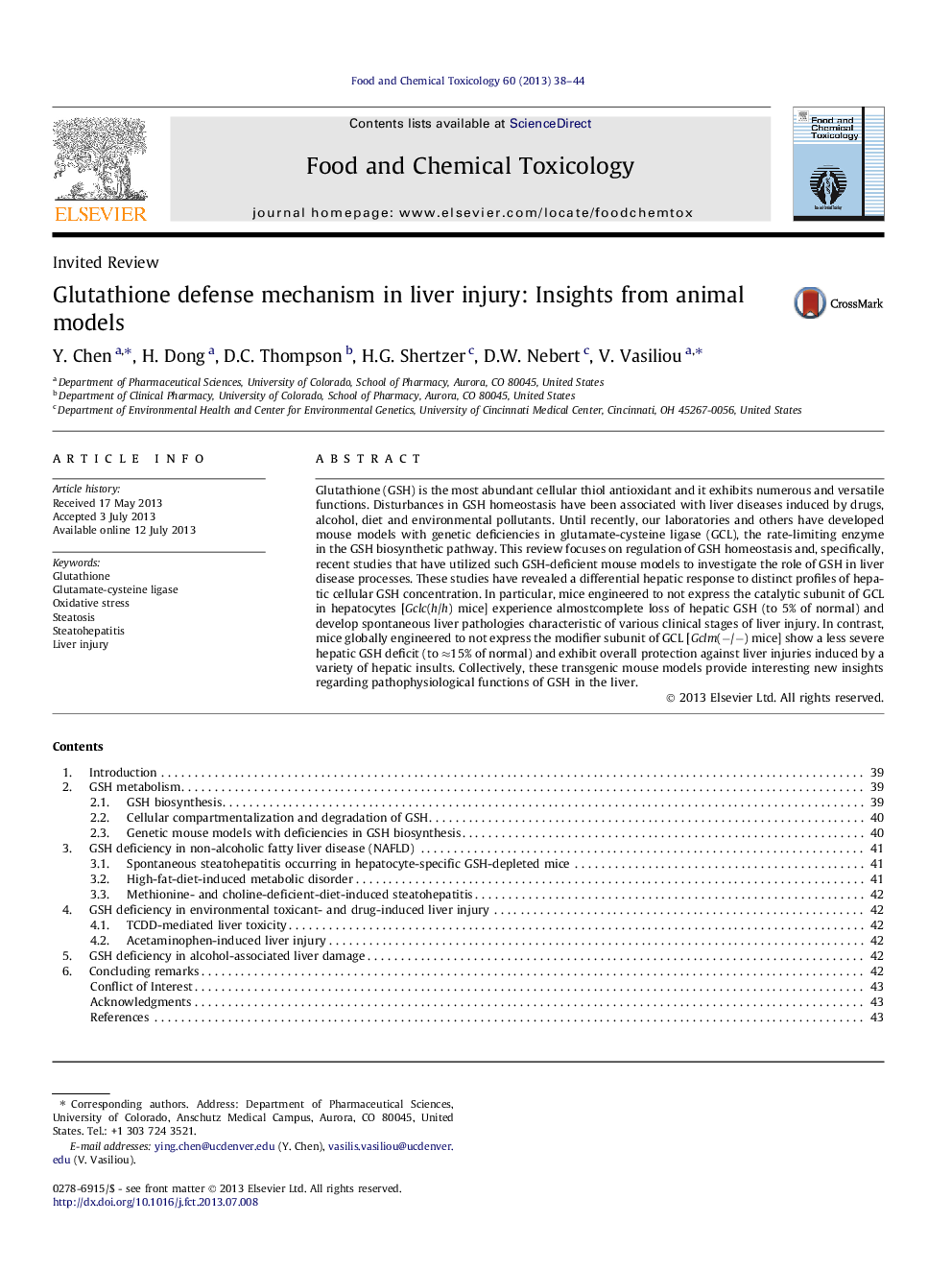| کد مقاله | کد نشریه | سال انتشار | مقاله انگلیسی | نسخه تمام متن |
|---|---|---|---|---|
| 2585081 | 1561784 | 2013 | 7 صفحه PDF | دانلود رایگان |

• GSH-deficient mouse models have been developed by targeting GCL, the rate-limiting enzyme of GSH biosynthesis.
• Liver-specific Gclc knockout mice have 95% depletion of hepatic GSH and develop spontaneous steatohepatitis.
• Universal Gclm deleted mice have 15% of normal hepatic GSH and are protected from liver injuries induced by hepatic insults.
• Animal studies indicate a potential role of hepatic GSH in fine-tuning metabolic and stress responses to liver injuries.
Glutathione (GSH) is the most abundant cellular thiol antioxidant and it exhibits numerous and versatile functions. Disturbances in GSH homeostasis have been associated with liver diseases induced by drugs, alcohol, diet and environmental pollutants. Until recently, our laboratories and others have developed mouse models with genetic deficiencies in glutamate-cysteine ligase (GCL), the rate-limiting enzyme in the GSH biosynthetic pathway. This review focuses on regulation of GSH homeostasis and, specifically, recent studies that have utilized such GSH-deficient mouse models to investigate the role of GSH in liver disease processes. These studies have revealed a differential hepatic response to distinct profiles of hepatic cellular GSH concentration. In particular, mice engineered to not express the catalytic subunit of GCL in hepatocytes [Gclc(h/h) mice] experience almostcomplete loss of hepatic GSH (to 5% of normal) and develop spontaneous liver pathologies characteristic of various clinical stages of liver injury. In contrast, mice globally engineered to not express the modifier subunit of GCL [Gclm(−/−) mice] show a less severe hepatic GSH deficit (to ≈15% of normal) and exhibit overall protection against liver injuries induced by a variety of hepatic insults. Collectively, these transgenic mouse models provide interesting new insights regarding pathophysiological functions of GSH in the liver.
Journal: Food and Chemical Toxicology - Volume 60, October 2013, Pages 38–44